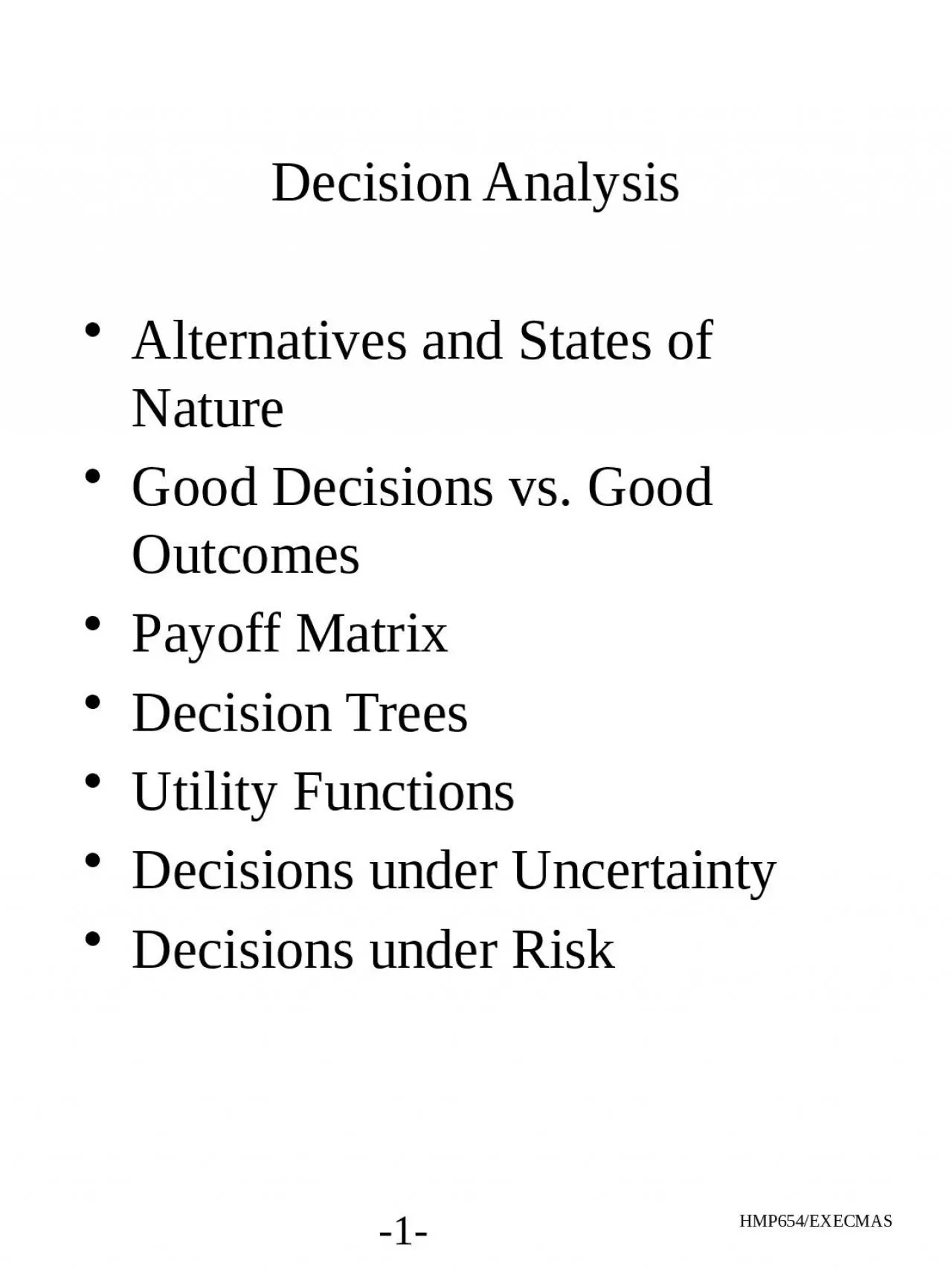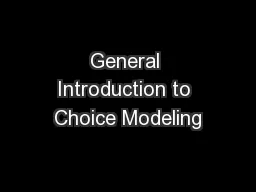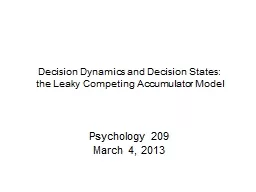PPT-Decision Analysis Alternatives and States of Nature
Author : vivian | Published Date : 2023-11-03
Good Decisions vs Good Outcomes Payoff Matrix Decision Trees Utility Functions Decisions under Uncertainty Decisions under Risk Decision Analysis Payoff Tables
Presentation Embed Code
Download Presentation
Download Presentation The PPT/PDF document "Decision Analysis Alternatives and State..." is the property of its rightful owner. Permission is granted to download and print the materials on this website for personal, non-commercial use only, and to display it on your personal computer provided you do not modify the materials and that you retain all copyright notices contained in the materials. By downloading content from our website, you accept the terms of this agreement.
Decision Analysis Alternatives and States of Nature: Transcript
Download Rules Of Document
"Decision Analysis Alternatives and States of Nature"The content belongs to its owner. You may download and print it for personal use, without modification, and keep all copyright notices. By downloading, you agree to these terms.
Related Documents














